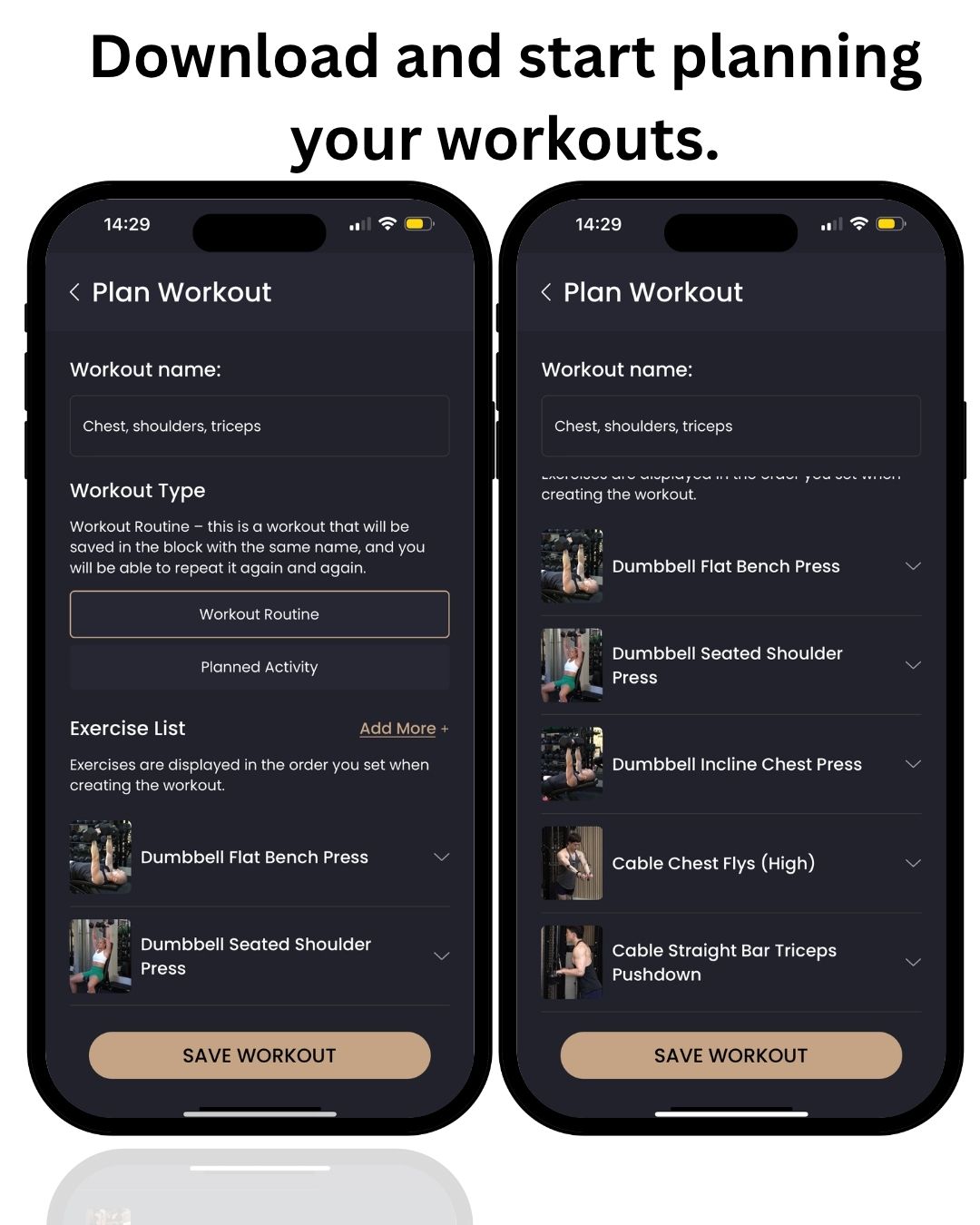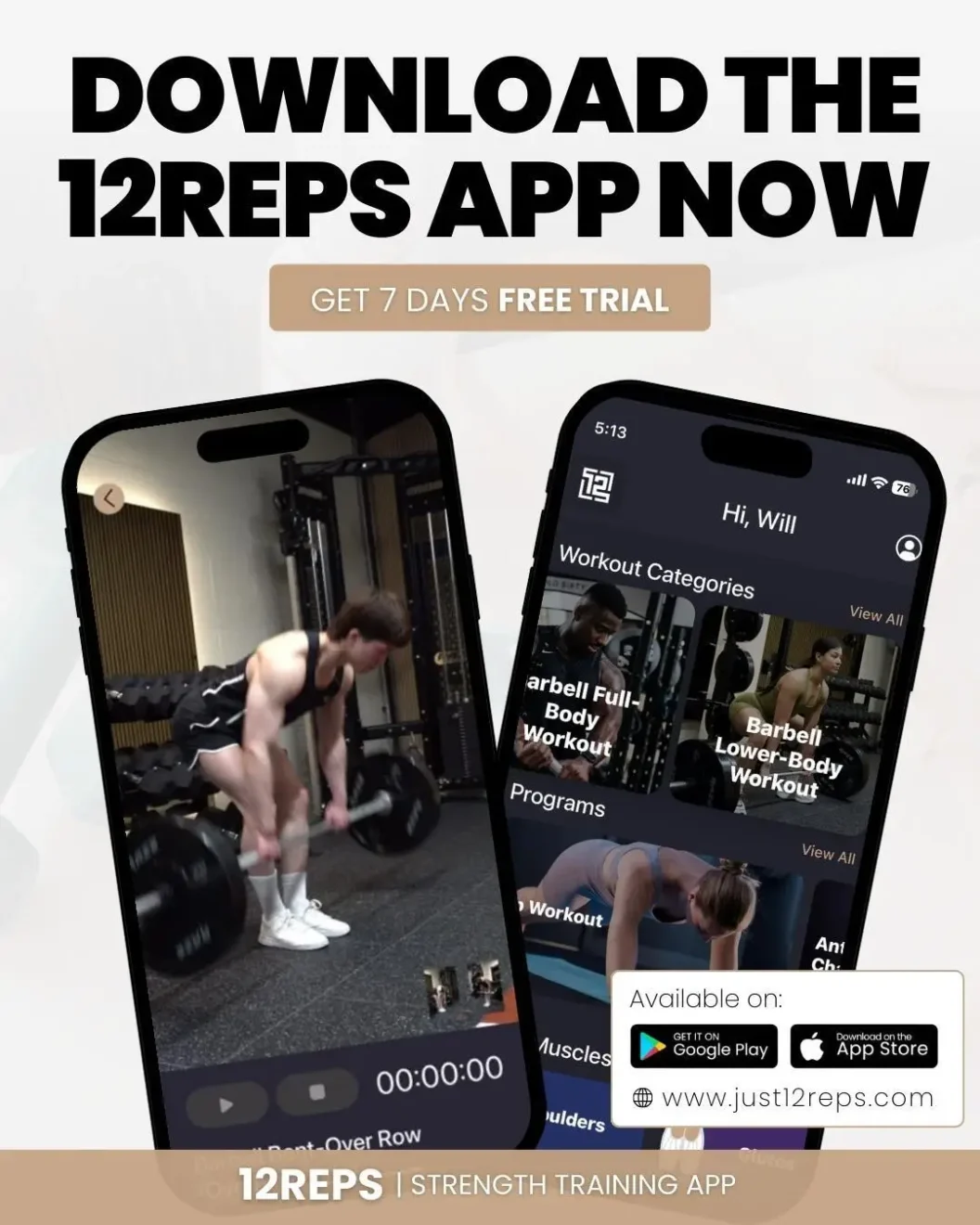Written by Will Duru, BSc (Hons) Sport and Exercise Science, award-winning Personal Trainer with over 10 years of experience in strength training and optimising recovery .
I have been training people for over 10 years. In that time, I have seen many workout methods. Some work well. Some do not work at all. But there is one method that always gives great results. It is called push and pull training.
Push and pull training is simple. You do exercises that push weight away from your body. Then you do exercises that pull weight towards your body. This creates balance in your muscles. It also helps you build strength and lose fat at the same time.
Today I want to share my favourite push and pull workout with you. This workout has helped hundreds of my clients get stronger and leaner. It uses six exercises that work perfectly together. You will see amazing results if you follow this plan.
Why Push and Pull Training Works So Well
Your body is designed to work in patterns. When you push something, certain muscles work hard. When you pull something, different muscles work hard. Push and pull training uses this natural design.
Here are the main benefits I see with my clients:
Better Recovery: When you do a push exercise, your pulling muscles rest. When you do a pull exercise, your pushing muscles rest. This means you can train harder and more often.
Balanced Strength: Many people only train the muscles they can see in the mirror. This creates imbalances. Push and pull training works both sides equally. This prevents injuries and improves posture.
More Fat Burning: You switch between different muscle groups throughout the workout. This keeps your heart rate high. High heart rate means you burn more calories during and after your workout.
Faster Muscle Growth: You can train each muscle group more times per week. More training sessions mean faster muscle growth. But you still get enough rest between sessions.
Simple to Follow: You do not need to think about which muscles to train together. Just alternate between push and pull exercises. It is that simple.
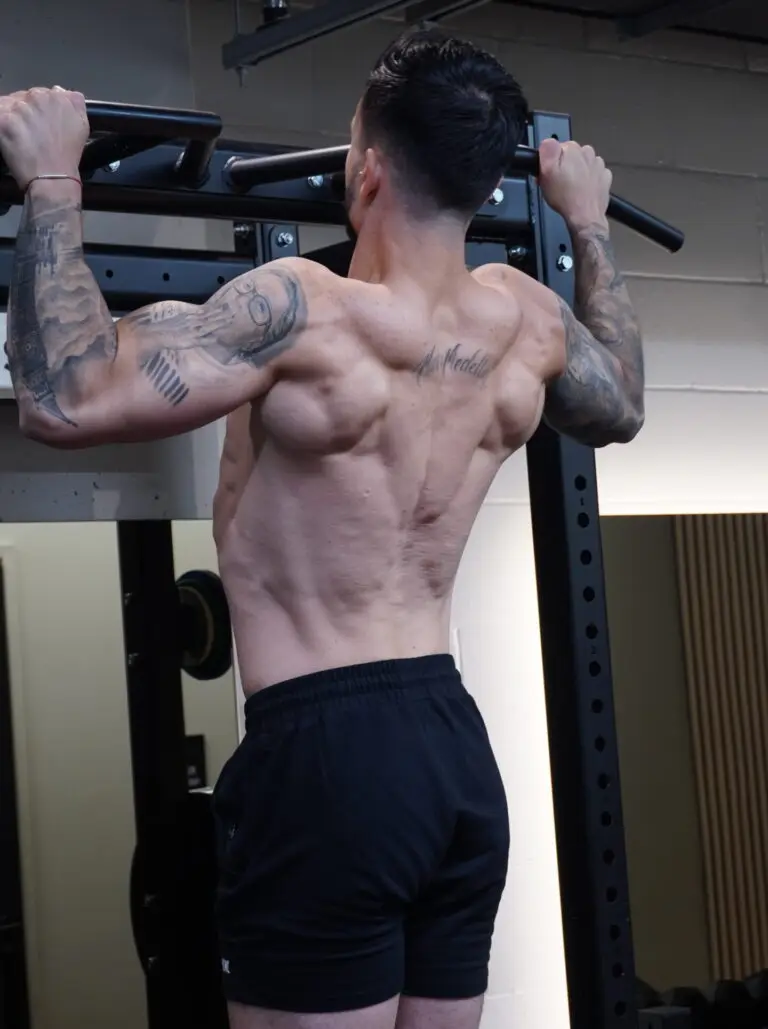
The Ultimate Push and Pull Workout
This workout contains six exercises. Three are push exercises. Three are pull exercises. You alternate between them throughout the session. This keeps your muscles fresh and your heart rate high.
The workout takes 45 to 60 minutes to complete. You should do it 2 to 3 times per week. Always have at least one full day of rest between sessions. This gives your muscles time to recover and grow.
Exercise 1: Dumbbell Incline Press (4 sets, 10-12 reps)
This is our first push exercise. It targets your upper chest, front shoulders, and triceps. The incline angle is perfect for building the upper chest. This area is often weak in most people.
How to perform it: Set an incline bench to 30-45 degrees. Sit on the bench with a dumbbell in each hand. Hold the weights at chest level with your palms facing forward.
Press the dumbbells up and slightly towards each other. Squeeze your chest muscles at the top. Lower the weights slowly back to the starting position. Feel a good stretch in your chest.
Key points:
•Keep your feet flat on the floor
•Do not arch your back too much
•Control the weight on the way down
•Focus on feeling your chest muscles work
Exercise 2: Seated Floor Rope Row (4 sets, 12 reps)
Now we switch to our first pull exercise. This works your middle back, rear shoulders, and biceps. It is the perfect opposite to the chest press we just did.
How to perform it: Sit on the floor with your legs straight out in front of you. Attach a rope to a low cable machine. Grab the rope with both hands and sit back so there is tension in the cable.
Pull the rope towards your stomach. Squeeze your shoulder blades together as you pull. Hold for a second at the back. Then slowly return to the starting position.
Key points:
•Keep your back straight throughout
•Pull with your back muscles, not your arms
•Squeeze your shoulder blades together
•Feel the stretch at the front of each rep
Exercise 3: Incline Bench Single Arm Row (4 sets, 15 reps each hand)
This exercise works one arm at a time. This helps fix any strength differences between your left and right sides. It also challenges your core muscles for stability.
How to perform it: Set an incline bench to 45 degrees. Lie face down on the bench with a dumbbell in one hand. Let your arm hang straight down from your shoulder.
Pull the dumbbell up towards your ribs. Drive your elbow back, not out to the side. Squeeze your shoulder blade towards your spine. Lower the weight slowly and feel the stretch.
Key points:
•Do all reps on one side before switching
•Keep your body stable on the bench
•Pull with your back, not your bicep
•Focus on the squeeze at the top
Exercise 4: Bench Press (4 sets, 10-12 reps)
Back to pushing exercises. The bench press is the king of chest exercises. It works your entire chest, front shoulders, and triceps. You can use heavier weights with this exercise.
How to perform it: Lie flat on a bench with your feet on the floor. Grab the barbell with your hands slightly wider than your shoulders. Pull your shoulder blades together and down.
Lower the bar to your chest at nipple level. Touch lightly, do not bounce. Press the bar up powerfully. The bar should move slightly towards your head as you press.
Key points:
•Keep your shoulder blades pulled together
•Lower the bar with control
•Press up with power
•Keep your core tight throughout
Exercise 5: Rope Pull Down (4 sets, 15 reps)
Another pulling exercise that targets your lats and upper back. The rope allows for a natural grip and good range of motion. This exercise is excellent for building width in your back.
How to perform it: Sit at a lat pulldown machine with a rope attachment. Grab the rope with both hands and lean back slightly. Your arms should be fully extended above you.
Pull the rope down towards your upper chest. Separate the rope at the bottom and squeeze your shoulder blades together. Return to the starting position with control.
Key points:
•Lean back slightly, not too much
•Pull with your back muscles
•Separate the rope at the bottom
•Control the weight on the way up
Exercise 6: Cable Chest Press (4 sets, 12 reps)
Our final exercise is another push movement. The cables provide constant tension throughout the movement. This gives a different feel compared to free weights and helps finish your chest muscles.
How to perform it: Stand in the middle of a cable crossover machine. Set the cables at chest height. Step forward with one foot for balance. Hold the handles at chest level.
Press the handles forward and slightly together. Squeeze your chest muscles at the front. Return to the starting position slowly. Feel a stretch across your chest.
Key points:
•Keep good posture throughout
•Press forward and slightly together
•Squeeze your chest at the front
•Control the cables at all times
Workout Summary Table
| Exercise | Sets | Reps | Rest Time | Main Muscles | Type |
| Dumbbell Incline Press | 4 | 10-12 | 90-120 seconds | Upper Chest, Front Shoulders, Triceps | Push |
| Seated Floor Rope Row | 4 | 12 | 60-90 seconds | Middle Back, Rear Shoulders, Biceps | Pull |
| Incline Bench Single Arm Row | 4 | 15 each arm | 45-60 seconds | Lats, Rhomboids, Rear Shoulders | Pull |
| Bench Press | 4 | 10-12 | 90-120 seconds | Chest, Front Shoulders, Triceps | Push |
| Rope Pull Down | 4 | 15 | 45-60 seconds | Lats, Upper Back, Biceps | Pull |
| Cable Chest Press | 4 | 12 | 60-90 seconds | Chest, Front Shoulders, Triceps | Push |
Total Time: 45-60 minutes
Frequency: 2-3 times per week with at least 48 hours rest between sessions
How This Builds Muscle and Burns Fat
This workout is designed to do two things at once. It builds muscle and burns fat. Many people think you can only do one or the other. This is not true. With the right workout, you can do both.
The Muscle Building Process
Your muscles grow when you challenge them with resistance. This workout challenges your muscles in three different ways:
Heavy Resistance (10-12 reps): These exercises use heavier weights. They create mechanical tension in your muscles. This tension signals your body to build bigger, stronger muscles.
Moderate Resistance (12 reps): These exercises use medium weights. They provide a good balance of strength and endurance. They also improve blood flow to your muscles.
Light Resistance (15 reps): These exercises use lighter weights but more repetitions. They create metabolic stress in your muscles. This stress also helps muscles grow and improves their endurance.
Using all three rep ranges in one workout gives you the best of everything. Your muscles get challenged in different ways. This leads to better overall development.
The Fat-Burning Process
This workout burns fat in several ways:
High Calorie Burn: You switch between push and pull exercises throughout the workout. This keeps your heart rate elevated. Higher heart rate means more calories burned.
Afterburn Effect: Your body continues burning calories for hours after you finish training. This happens because your muscles need energy to repair and recover.
Increased Metabolism: Building muscle increases your metabolism. Muscle tissue burns calories even when you are resting. More muscle means higher daily calorie burn.
Improved Insulin Sensitivity: Regular resistance training improves how your body handles carbohydrates. This makes it easier to stay lean and build muscle.
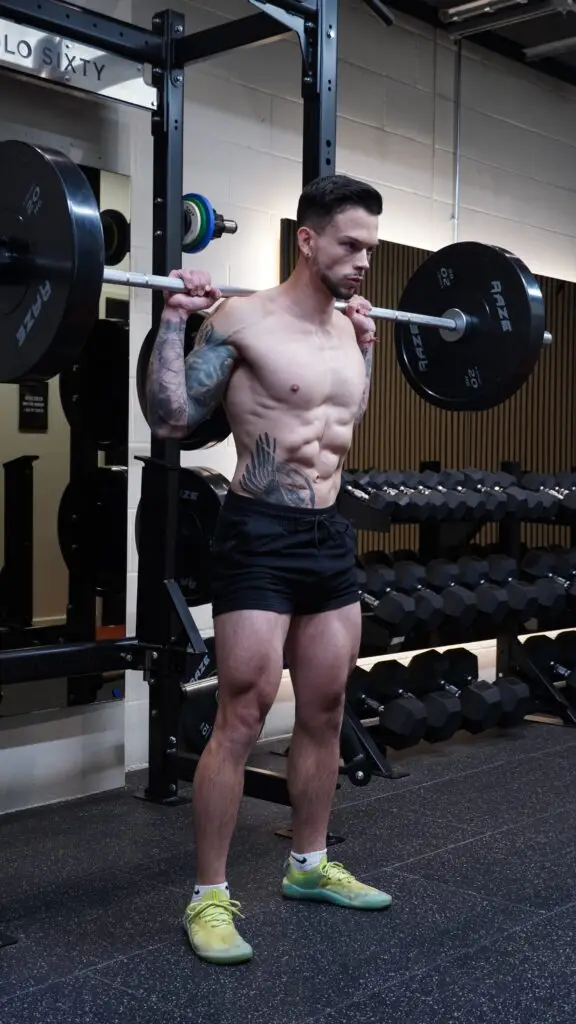
Additional Push and Pull Workouts
To keep your training fresh and prevent plateaus, here are two more push and pull workouts. You can rotate between all three workouts to add variety to your training.
Workout 2: Upper Body Power
This workout focuses on building strength and power in your upper body. It uses slightly different exercises to challenge your muscles in new ways.
Exercise 1: Dumbbell Shoulder Press (4 sets, 10-12 reps) This overhead pressing movement targets your shoulders and triceps. You can do it sitting or standing. Standing works your core more.
Exercise 2: Bent-Over Barbell Row (4 sets, 12 reps) This is an excellent back exercise that works your lats, middle back, and rear shoulders. Keep your back straight and pull the bar to your lower chest.
Exercise 3: Single-Arm Dumbbell Press (4 sets, 15 reps each arm) This unilateral exercise works one arm at a time. It challenges your core stability and helps fix strength imbalances.
Exercise 4: T-Bar Row (4 sets, 10-12 reps) The T-bar row allows you to use heavy weight safely. It targets your middle back and lats. Focus on squeezing your shoulder blades together.
Exercise 5: Incline Dumbbell Flyes (4 sets, 15 reps) This isolation exercise targets your upper chest. Use a controlled movement and focus on the stretch at the bottom.
Exercise 6: Face Pulls (4 sets, 12 reps) This exercise works your rear shoulders and upper back. It helps improve posture and balances all the pressing exercises.
Workout 2 Summary Table
| Exercise | Sets | Reps | Rest Time | Main Muscles | Type |
| Dumbbell Shoulder Press | 4 | 10-12 | 90-120 seconds | Shoulders, Triceps | Push |
| Bent-Over Barbell Row | 4 | 12 | 60-90 seconds | Lats, Middle Back, Rear Shoulders | Pull |
| Single-Arm Dumbbell Press | 4 | 15 each arm | 45-60 seconds | Chest, Front Shoulders, Triceps | Push |
| T-Bar Row | 4 | 10-12 | 90-120 seconds | Middle Back, Lats | Pull |
| Incline Dumbbell Flyes | 4 | 15 | 45-60 seconds | Upper Chest | Push |
| Face Pulls | 4 | 12 | 60-90 seconds | Rear Shoulders, Upper Back | Pull |
Additional Push and Pull Workouts
Workout 3: Functional Strength
This workout uses more bodyweight and functional movements. It improves your real-world strength and adds variety to your training.
Exercise 1: Push-Ups with Rotation (4 sets, 10-12 reps) Do a normal push-up. At the top, rotate your body and reach one arm towards the ceiling. This works your chest, shoulders, and core.
Exercise 2: Wide-Grip Pull-Ups or Lat Pulldowns (4 sets, 12 reps) Use a wide grip to target your lats. If you cannot do pull-ups, use the lat pulldown machine instead.
Exercise 3: Diamond Push-Ups (4 sets, 15 reps) Make a diamond shape with your hands under your chest. This variation targets your triceps more than regular push-ups.
Exercise 4: Reverse Flyes (4 sets, 10-12 reps) Use dumbbells or cables to work your rear shoulders and upper back. This exercise helps improve posture.
Exercise 5: Decline Push-Ups (4 sets, 15 reps) Put your feet on a bench or chair. This makes push-ups harder and targets your upper chest more.
Exercise 6: Inverted Rows (4 sets, 12 reps) Lie under a barbell and pull yourself up. This is like a reverse push-up. It works your back and biceps.
Workout 3 Summary Table
| Exercise | Sets | Reps | Rest Time | Main Muscles | Type |
| Push-Ups with Rotation | 4 | 10-12 | 90-120 seconds | Chest, Shoulders, Core | Push |
| Wide-Grip Pull-Ups/Pulldowns | 4 | 12 | 60-90 seconds | Lats, Upper Back, Biceps | Pull |
| Diamond Push-Ups | 4 | 15 | 45-60 seconds | Triceps, Inner Chest | Push |
| Reverse Flyes | 4 | 10-12 | 90-120 seconds | Rear Shoulders, Upper Back | Pull |
| Decline Push-Ups | 4 | 15 | 45-60 seconds | Upper Chest, Front Shoulders | Push |
| Inverted Rows | 4 | 12 | 60-90 seconds | Middle Back, Lats, Biceps | Pull |
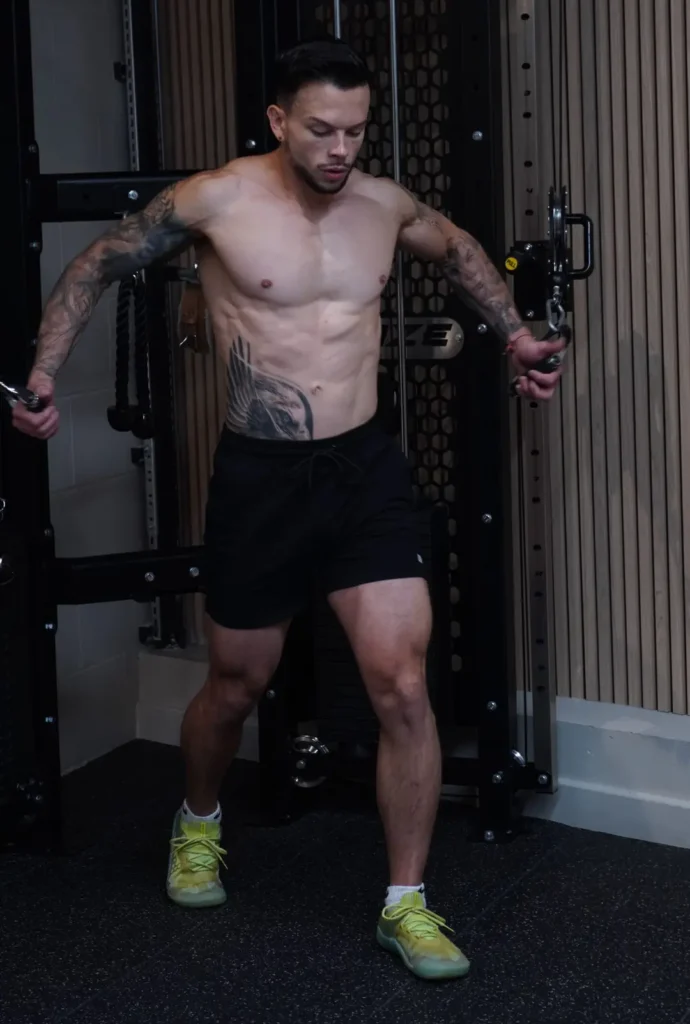
How to Progress and Get Better Results
Getting better results requires progressive overload. This means you need to gradually make your workouts harder over time. Here are the best ways to progress:
Week 1-2: Learn the Movements
Focus on perfect form for every exercise. Use lighter weights and concentrate on feeling the right muscles work. Good form is more important than heavy weight.
Week 3-4: Add More Reps
Once you have mastered the form, start adding repetitions. If the workout calls for 10-12 reps, try to get 12 reps on every set.
Week 5-6: Add More Weight
When you can do the maximum reps with perfect form, add more weight. Increase the weight by 2.5-5 pounds and drop back to the minimum reps.
Week 7-8: Reduce Rest Time
As you get fitter, you can rest less between sets. This makes the workout harder and burns more fat.
Week 9+: Advanced Techniques
You can add advanced techniques like supersets, drop sets, or pause reps to make the workouts even more challenging.
Important Training Tips
Here are my most important tips for getting the best results from these workouts:
Consistency is Key
It is better to do these workouts consistently with moderate effort than to train very hard sometimes. Aim to complete each workout as scheduled.
Focus on Form
Perfect form should always be your first priority. Poor form leads to injuries and poor results. If you cannot maintain good form, reduce the weight.
Track Your Progress
Write down what you do in each workout. Record the weights, sets, and reps. This helps you see your progress and stay motivated.
Get Enough Sleep
Your muscles grow while you sleep. Aim for 7-9 hours of quality sleep each night. Without enough sleep, you will not get good results.
Eat Enough Protein
Protein helps your muscles recover and grow. Aim for 0.8-1.2 grams of protein per pound of body weight. Good sources include chicken, fish, eggs, and protein powder.
Stay Hydrated
Drink plenty of water throughout the day. Aim for at least 8 glasses. Water helps your muscles function properly and recover faster.
Listen to Your Body
Some days you will feel great. Some days you will feel tired. Adjust your training accordingly. It is better to do an easier workout than to skip completely.
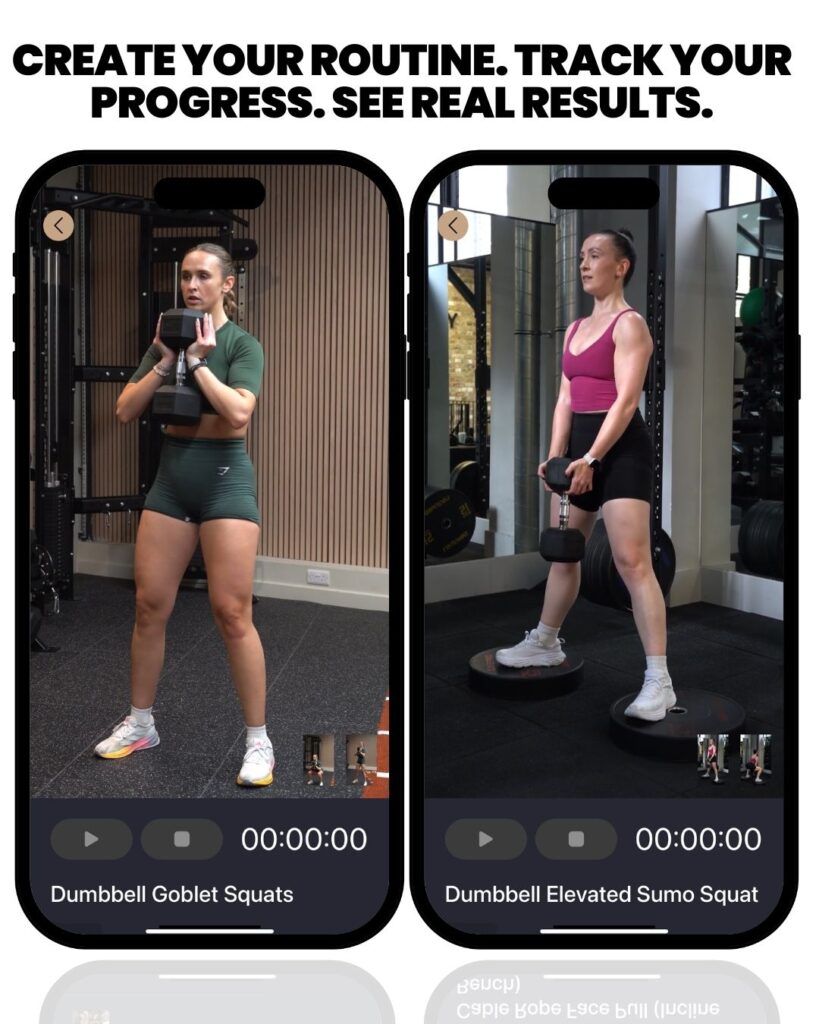
Perfect Your Exercise Form with 12Reps
Learning proper exercise form is crucial for getting results and staying injury-free. While I have described each exercise in this article, seeing the movements performed correctly makes a huge difference.
The 12Reps app is an excellent tool for mastering exercise technique. It contains over 1,300 strength exercises with detailed video demonstrations. Each exercise is performed by certified personal trainers who show you exactly how to do each movement.
What makes 12Reps special is its personalised approach. The app creates custom workout plans based on your goals, available equipment, and fitness level. Whether you want to build muscle, lose fat, or improve strength, the app adapts to your needs.
The app also includes smart progress tracking. You can log your weights, sets, and reps for each exercise. This makes it easy to see your progress over time and know when to increase the difficulty.
For the push and pull workouts in this article, the 12Reps app can show you proper form for each exercise. You can see exactly how to position your body, how fast to move the weight, and what the exercise should feel like.
Download the 12Reps app today to see professional demonstrations of all these exercises and many more. Perfect your form, track your progress, and get the results you deserve.

Conclusion
Push and pull training is one of the most effective ways to build muscle and lose fat at the same time. The three workouts in this article give you everything you need to transform your body.
Remember that results take time. You will not see changes overnight. But if you stick with these workouts for 8-12 weeks, you will see amazing improvements in your strength, muscle mass, and body composition.
The key to success is consistency. Start with Workout 1 and focus on learning the movements. Add the other workouts as you get more experienced. Track your progress and celebrate your improvements along the way.
Your fitness journey starts with your next workout. Choose one of these push and pull sessions and get started today. Your future self will thank you for taking action now.
These workouts have helped hundreds of my clients achieve their goals. They can help you too. Trust the process, stay consistent, and enjoy building a stronger, leaner body.


